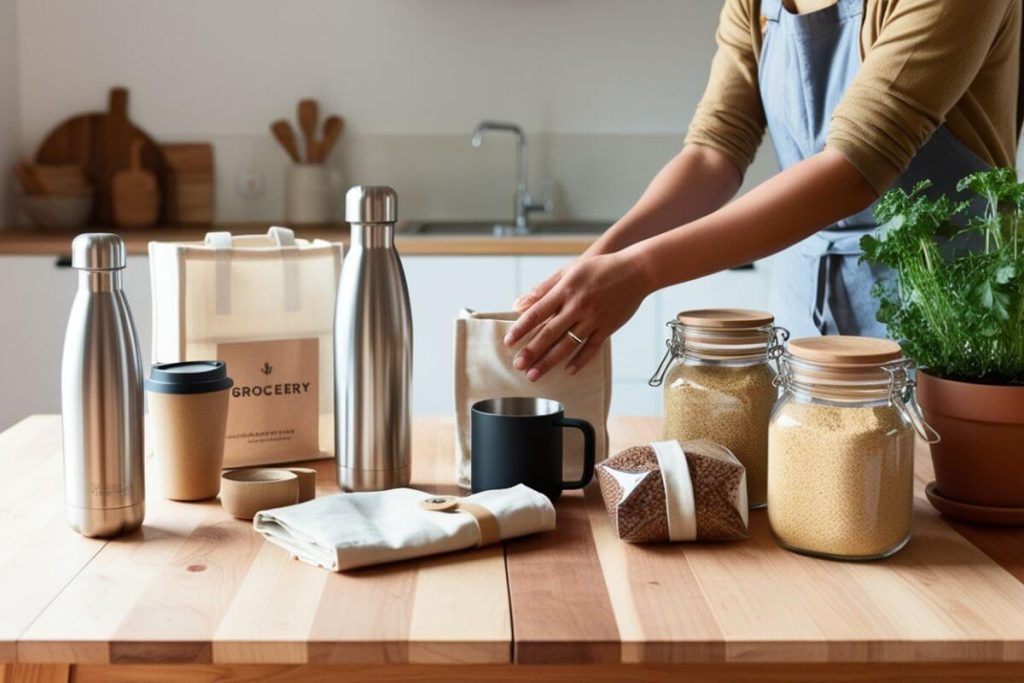
Living an eco-friendly lifestyle doesn’t have to be expensive or overwhelming. In fact, these eco-friendly lifestyle hacks can help you save money, reduce waste, and contribute to a healthier planet. Whether you’re new to sustainable living or a seasoned green enthusiast, these seven practical tips will lighten your environmental footprint while keeping your wallet happy. Let’s dive into how you can embrace an eco-friendly lifestyle without breaking the bank!
Why Eco-Friendly Lifestyle Hacks Matter
Before we explore the hacks, let’s talk about why sustainable living is worth your time. According to the Environmental Protection Agency (EPA), the average American produces 4.9 pounds of trash daily, much of which ends up in landfills. Meanwhile, rising energy costs and single-use products are draining budgets. By adopting eco-friendly lifestyle hacks, you can save money, conserve resources, and reduce your carbon footprint. Ready to get started? Here are seven ways to live greener and more thrifty.
Hack #1: Switch to Reusables for Big Savings
Single-use items like plastic bottles, coffee cups, and paper towels are convenient but costly for both your wallet and the planet. Embracing reusables is one of the simplest eco-friendly lifestyle hacks to save money and reduce waste.
How to Do It:
- Get a reusable water bottle and coffee mug. A durable stainless steel bottle costs about $20 and can save you hundreds compared to buying bottled water. Brands like Hydro Flask offer long-lasting options.
- Replace paper towels with cloth rags. Cut up old T-shirts or buy microfiber cloths for a reusable, washable alternative.
- Bring reusable shopping bags. Many stores now charge for plastic bags, so this hack saves cents per trip.
The Impact:
Switching to reusables can save $200-$300 annually on bottled water and coffee cups. It also helps curb the 8 million metric tons of plastic polluting our oceans each year, as noted by Ocean Conservancy.
Pro Tip: Check thrift stores for secondhand reusables to maximize savings.
Hack #2: Buy in Bulk to Cut Waste and Costs
Buying in bulk is a game-changer for sustainable living. It reduces packaging waste and saves you money on pantry staples, personal care products, and more. This eco-friendly lifestyle hack is perfect for anyone looking to streamline their shopping.
How to Do It:
- Shop at bulk food stores. Bring your own containers to fill with grains, nuts, or spices. Stores like Whole Foods often have bulk sections.
- Order bulk online. Platforms like Thrive Market offer eco-friendly goods in larger quantities.
- Store smart. Use glass jars to keep bulk items fresh and prevent food waste.
The Impact:
Bulk buying can cut grocery costs by 20-50% compared to pre-packaged items. It also reduces the 300 million tons of plastic produced annually, much of it from food packaging, according to National Geographic.
Pro Tip: Use apps like Too Good To Go to find discounted bulk goods nearing expiration.
Hack #3: Save Energy, Save Money
Your home is full of opportunities to adopt eco-friendly lifestyle hacks that lower utility bills and your carbon footprint. Small changes to your energy habits can make a big difference.
How to Do It:
- Switch to LED bulbs. They use 75% less energy and last up to 25 times longer than incandescent bulbs, per Energy Star.
- Unplug electronics. “Vampire energy” from idle devices can add $100+ to your yearly bill.
- Use a programmable thermostat. Lowering your heat by 7-10°F for 8 hours daily can save 10% on heating costs.
The Impact:
Energy-saving habits can save $200-$500 annually on utilities, depending on your home. Plus, reducing energy use lowers greenhouse gas emissions, a key driver of climate change, as explained by NASA.
Pro Tip: Ask your utility provider about rebates for energy-efficient upgrades like insulation or smart thermostats.
Hack #4: Grow Your Own Food, Even in Small Spaces
You don’t need a big yard to grow fresh herbs, veggies, or fruits. Gardening is an eco-friendly lifestyle hack that saves money on groceries and reduces food miles.
How to Do It:
- Start with herbs. Basil, mint, and cilantro thrive on windowsills or balconies.
- Try vertical gardening. Wall planters or stackable pots work in tight spaces.
- Compost scraps. Turn veggie peels into nutrient-rich soil instead of buying fertilizer.
The Impact:
Growing your own food can save $600 a year on groceries for a family of four, per the National Gardening Association. It also cuts the 40% of U.S. food wasted annually by letting you harvest only what you need.
Pro Tip: Join a local seed swap or community garden for free or low-cost seeds.
Hack #5: Thrift and Upcycle for Sustainable Style
Fast fashion and disposable furniture harm the environment and your budget. Thrifting and upcycling are eco-friendly lifestyle hacks that let you refresh your wardrobe and home sustainably.
How to Do It:
- Shop secondhand. Thrift stores, consignment shops, or apps like Poshmark offer quality items at low prices.
- Upcycle old stuff. Turn a worn dresser into a plant stand or repurpose jars as storage.
- Learn to mend. Basic sewing extends clothing life, saving you from replacements.
The Impact:
Thrifting can save $1,000+ a year on clothes and decor. It also reduces the 10% of global carbon emissions tied to fashion, per the World Resources Institute.
Pro Tip: Follow thrift influencers on Instagram for tips on finding gems and styling them.
Hack #6: DIY Cleaning and Personal Care Products
Store-bought cleaners and cosmetics often come in plastic and contain harmful chemicals. Making your own is a budget-friendly, eco-friendly lifestyle hack that’s easier than you think.
How to Do It:
- Make all-purpose cleaner. Mix water, white vinegar, and a few drops of essential oil.
- DIY shampoo bars or toothpaste. Find recipes online using coconut oil or baking soda.
- Use refillable containers. Buy ingredients in bulk and store them in glass jars.
The Impact:
DIY products can save $100-$200 yearly on household and personal care items. You’ll also avoid the 120 billion units of packaging from the cosmetics industry, per Zero Waste Week.
Pro Tip: Start with one recipe, like a multi-surface cleaner, to build confidence.
Hack #7: Embrace Minimalism to Live Lighter
Minimalism is the ultimate eco-friendly lifestyle hack for reducing waste and saving money. By focusing on what matters, you can curb clutter and make sustainable choices.
How to Do It:
- Declutter mindfully. Donate or sell items you don’t need and avoid impulse buys.
- Follow “one in, one out.” Remove an old item for every new one you bring home.
- Choose quality over quantity. Invest in durable, eco-friendly products.
The Impact:
Minimalism can save thousands over time by cutting unnecessary spending. It also reduces the 2.24 billion tons of global municipal solid waste annually, per the World Bank.
Pro Tip: Try a 30-day no-spend challenge to rethink your consumption habits.
Small Steps, Big Impact
These eco-friendly lifestyle hacks prove that sustainable living is accessible and affordable. From reusables to minimalism, each step helps you save money, reduce waste, and protect the planet. The best part? You don’t need to do it all at once—just pick one hack and build from there.
Getting Started:
- Choose one hack to try this week, like switching to reusable bags.
- Track your savings with a budgeting app to stay motivated.
- Spread the word. Share your eco-friendly lifestyle tips on social media to inspire others.
Final Thoughts
Adopting an eco-friendly lifestyle is about making intentional choices that benefit you and the planet. These seven eco-friendly lifestyle hacks—reusables, bulk buying, energy-saving, gardening, thrifting, DIY products, and minimalism—show that sustainable living can be practical, fun, and budget-friendly. So, which hack will you try first? Share your thoughts or green tips in the comments—I’d love to hear how you’re saving money and the planet!
